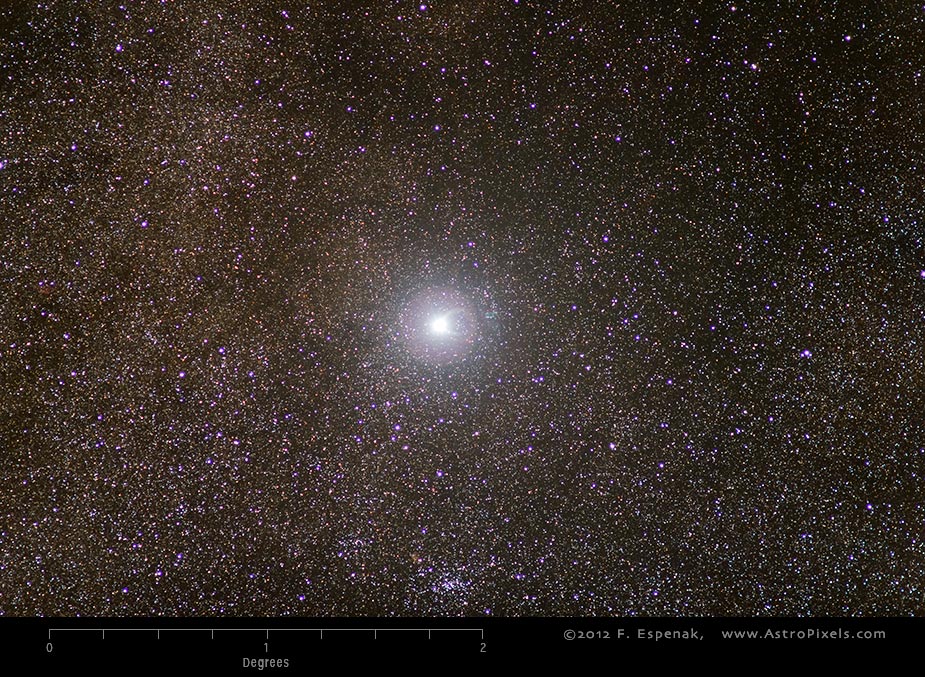105 Bright Stars – Luminous or Nearby? (Graded Reading)
Janice Hester

Rigil Kentaurus A is one of the brightest stars in the sky, along with Sirius, Arcturus, Vega, and Rigel. Unlike these other bright stars, which are all more luminous than the Sun, Rigil Kentaurus A is surprisingly Sun-like.
Why is this star so bright when seen from the Earth? Because it’s also one of the closest stars to the Sun. It’s one of a triplet of stars, called Alpha Centauri, that are our nearest stellar neighbors. This relative proximity means that Rigil Kentaurus A shines brightly in the sky.
In contrast, Proxima Centauri, the member of the triplet that is closest to us, is much too faint to see without a telescope. This star has a visual apparent magnitude of 11.5, which is about 100 times fainter than your eye can see. Proxima Centauri is inherently fainter (less luminous) than Rigil Kentaurus A.
Another one of the brightest stars in the sky, Rigel, is over 800 light years away from us, compared to about 4.4 light years for Alpha Centauri. Despite being so far away, it shines brightly in the sky because it is over 100,000 times more luminous than the Sun; that is, it radiates over 100,000 times as much energy in light.
The sky is full of stars that vary greatly both in their luminosity (inherent brightness) and their distance from us. Together, luminosity and distance determine how bright a star appears when seen from Earth. Unfortunately, this means that we cannot determine a star’s luminosity or distance from the brightness that we observe. A seemingly bright star could be a mundane, but near-by star — like Rigil Kentaurus A — or it could be a very distant, but very luminous star — like Rigel. Of course there are also stars, like Sirius, that are a little of both. Sirius, the brightest star is the sky, is a modest 8.6 lightyears away with a luminosity a little over 25 times that of the Sun.
This diversity among stars is exciting, but also frustrating. How are we supposed to tell how luminous or how distant a star is if we can’t tell from its brightness alone?
